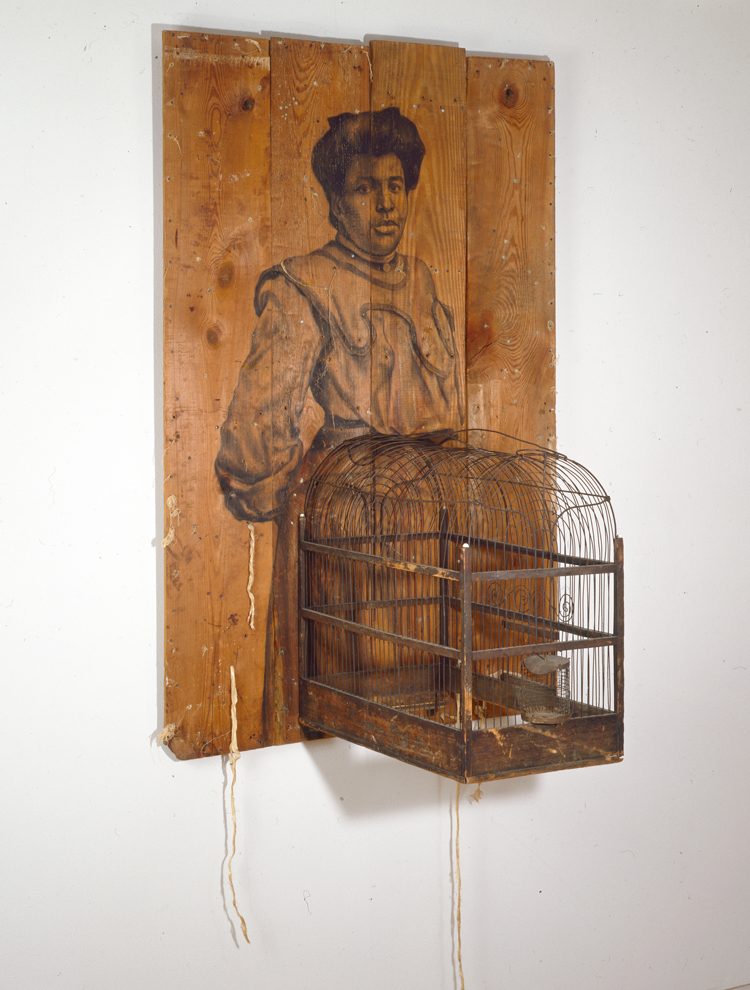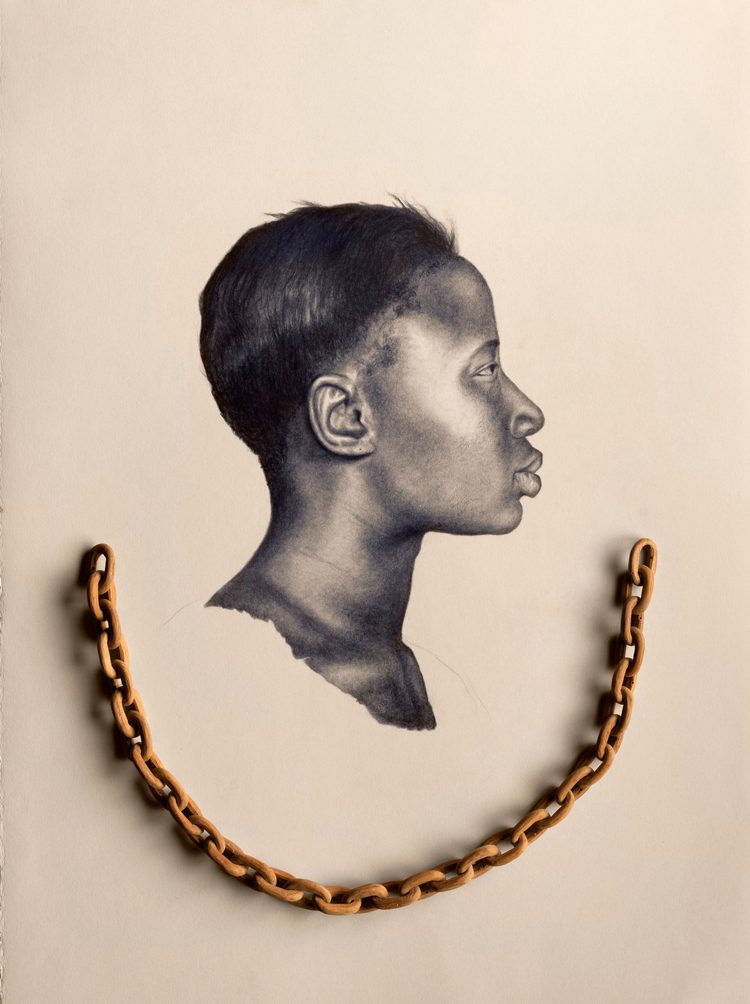
Whitfield Lovell, Cage, 2001. Charcoal on wood and found objects. Collection of Julia J. Norrell. Courtesy DC Moore Gallery © Whitfield Lovell and DC Moore Gallery, New York
I know why the caged bird sings . . .
–Maya Angelou, “Caged Bird,” 1983
The first act of liberation is to destroy one’s cage.
–Michael S. Harper, poet, 1977
From the front, the cage attached to the lower body of this drawn woman could be associated with the shape of a dress, perhaps even as an indirect reference to the cage-like construction of garments such as 19th-century crinolines. Yet from the side, the cage extends out and becomes suggestive of a pregnant womb. It is harmoniously married to her frame, yet it simultaneously traps her. The contradiction speaks to the uneven treatment women historically have received, being at once matriarchs in the domestic sphere and victims of subjugation and inequality in the public one.
Whitfield Lovell: The Kin Series and Related Works is on view through Jan. 8, 2017.


